Gold, silver and bronze medals have been presented to the Olympic Games top three place-getters since 1904. The designs of the medals have changed significantly over time. For the reverse of the medal, each organizing committee is allowed their own design. Included here are descriptions of some of the recent designs.
1900
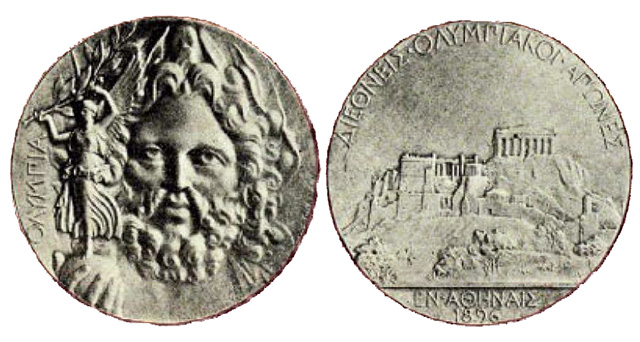 1896 medal
1896 medal
1900
 A Paris 1900 Olympic Games gilt winner's plaque,
A Paris 1900 Olympic Games gilt winner's plaque, inscribed CONCOURS DE SAUVETAGE SUR TERRE [LIFE SAVING ON LAND]
1904
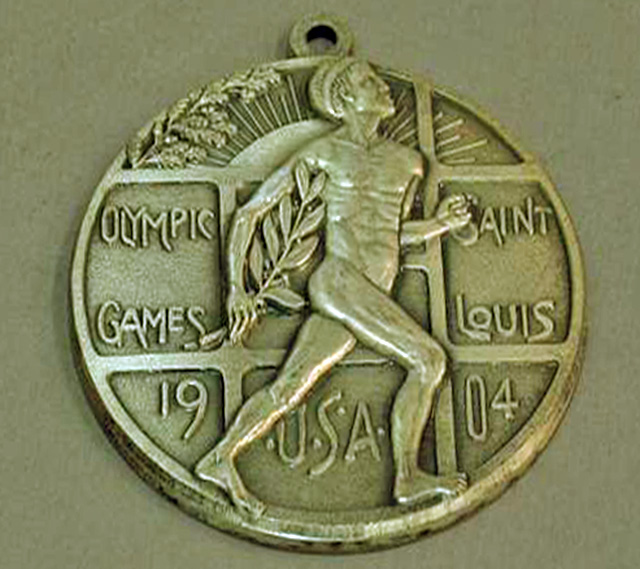 1904 Gold medal design
1904 Gold medal design
1920
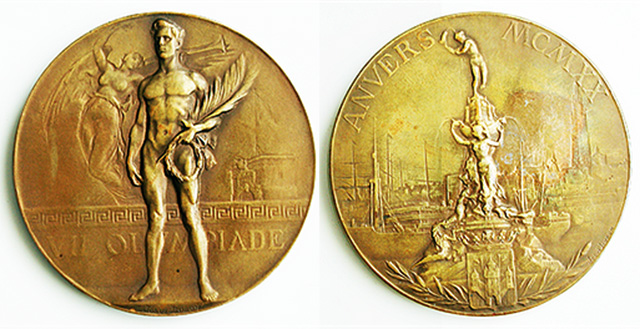 1920 Gold medal design
1920 Gold medal design
1928
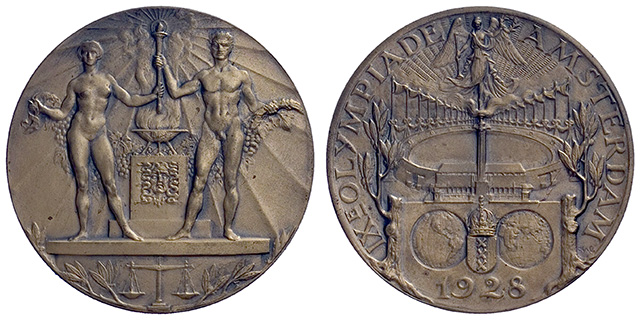 1928 Bronze medal design, front and back
1928 Bronze medal design, front and back
1936
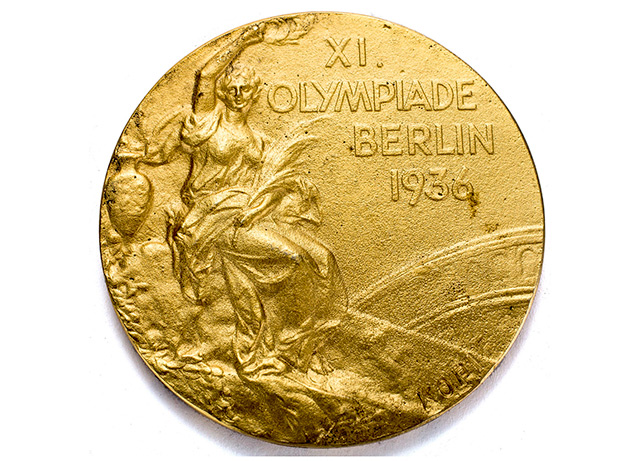 1936 Gold medal design
1936 Gold medal design
1952
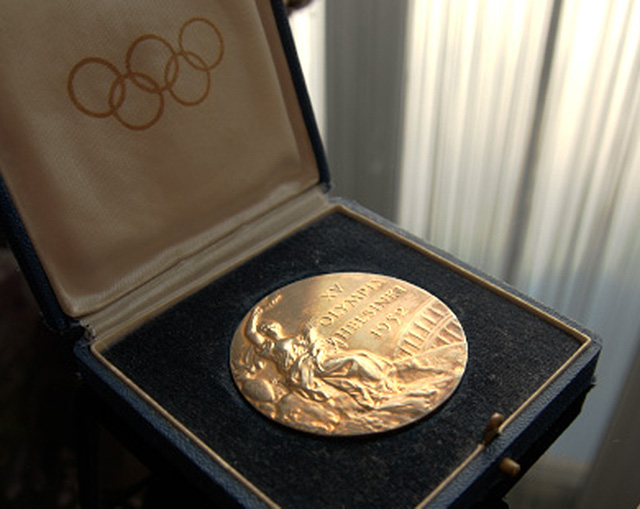 1952 Gold medal design
1952 Gold medal design
Atlanta 1996 Olympic Medals
At the games in Atlanta, the Atlanta Committee for the Olympic Games (ACOG ) selected the ACOG logo plus a pictogram of the particular sport the medal is being awarded for. There were a total of 1,838 medals awarded - 604 gold, 604 silver, and 630 bronze. There are more bronze medals awarded as some Olympic events do not have third or fourth place winners - the losers in semi-final rounds are both awarded bronze medals.
Sydney 2000
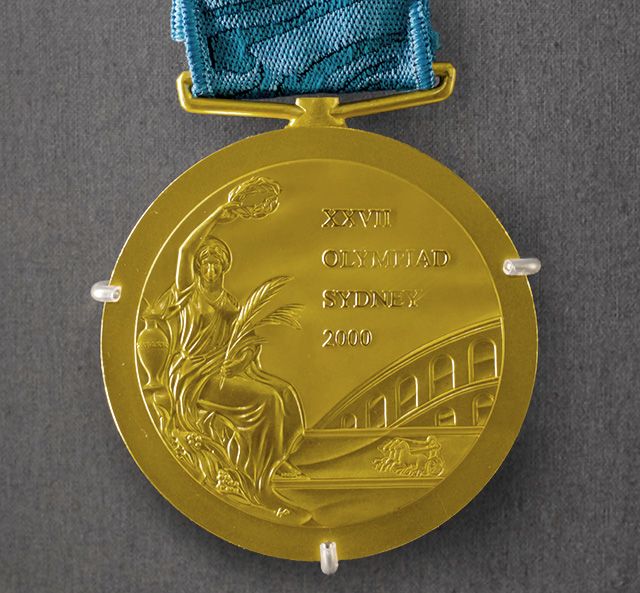 Sydney 2000 Olympic Games medal
Sydney 2000 Olympic Games medal The front side of the medals for the 2000 Sydney Olympic Games has the traditional goddess of victory, holding a palm in her left hand and a winner's crown in her right. The inscription reads: "XXVII OLYMPIAD SYDNEY 2000". On the reverse side is an image with the Sydney Opera House, the Olympic torch and the Olympic rings. The bronze for the third place medal was sourced from Australian 1 and 2 cent coins that are no longer in circulation. Design by Wojciech PIETRANIK.
Athens 2004 Olympic Medals
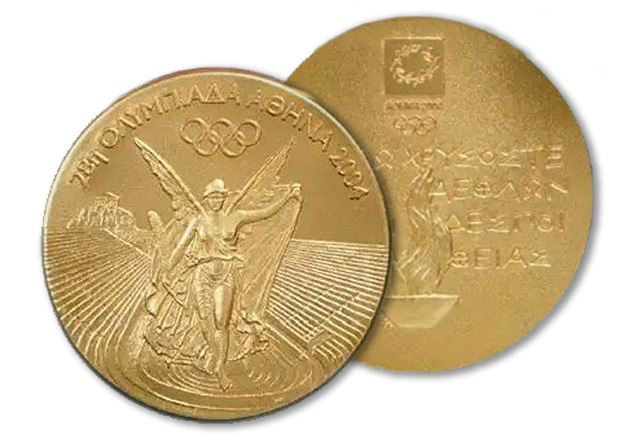 Athens 2004 Olympic Games medals
Athens 2004 Olympic Games medals The copper for the 2004 Athens Olympics medals came from Cyprus. It was transported to Greece in June 2004 in a full-scale replica of the ancient Greek merchant ship 'Kyrenia" which sank off the coast over 2000 years ago.
Beijing 2008 Olympic Medals
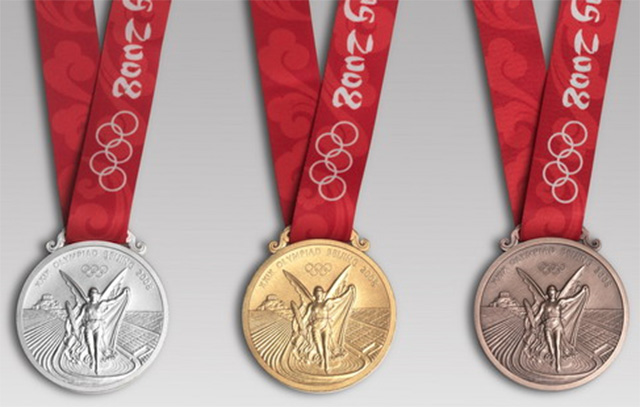 Beijing 2008 Olympic Games medals
Beijing 2008 Olympic Games medalsThe medals for the Beijing Games were 70mm in diameter and 6mm in thickness. The medal for the Beijing 2008 Olympic Games was inlaid with a jade disk, inspired by an ancient Chinese piece called "Bi". Jade has an important place in Chinese culture as it represents beauty and excellence in all things. The medal hook is inspired by the dragon which is a symbol of strength and power.
London 2012 Olympic Medals
On one side is depicted Nike with Panathinaiko Stadium in the background, and on the other The River Thames and the London Games logo with angled lines in the background. The medals were designed by David Watkins, and made by the Royal Mint. Diameter: 85mm, thickness: 7mm, weight: 375–400 grams.
Rio 2016 Olympic Medals
 Rio Olympic Games medal
Rio Olympic Games medal On the obverse side of the medal, Nike, goddess of victory, is depicted flying into the Panathinaikos stadium. Above the image are is the inscription: "XXXI Olympiada Rio 2016". The reverse side features laurel leaves surrounding the Rio 2016 Olympics logo. For the first time in Olympic history, the medals were made slightly thicker at their central point compared with the edges.
Tokyo 2020 Olympic Medals
The medals for the Tokyo Olympic Games' have been made from recycled metal, taken from old mobile phones and small household appliances donated by people across Japan. The medals were produced from 78,985 tons of recycled electronic devices, which included digital cameras, laptops, hand-held games and over 6 million mobile phones.
Paris 2024 Olympic Medals
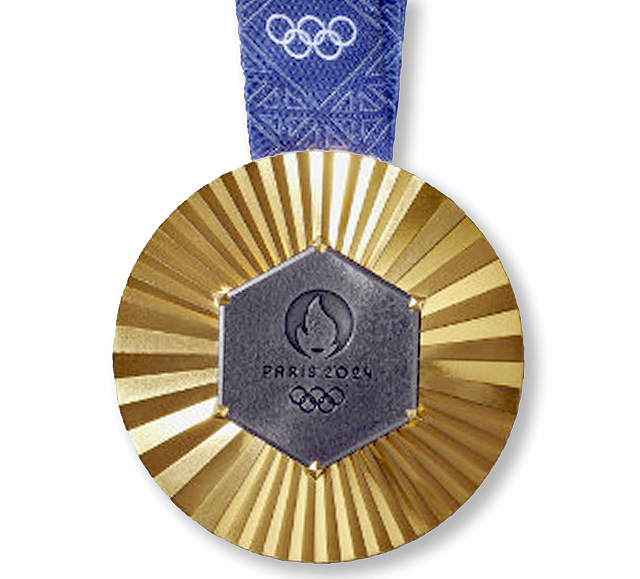 Paris 2024 Olympic Games medal
Paris 2024 Olympic Games medal The medals for the 2024 Paris Games were designed by the elite French jewelers Maison Chaumet. The main feature of the medals is a six-sided metal medallion set in the center like a precious stone, made from an original piece of the Eiffel Tower. Surrounding it is a circular arrangement of ridges designed to catch the light and evoke the rays of the sun.
While the front designs for the Olympic and Paralympic medals are the same, the reverse is different. The back side of the Olympic medals feature Nike, the goddess of victory, emerging from the Panathenaic Stadium. In a nod to 2024, the Eiffel Tower is seen in the background, along with the Acropolis.
Related Pages
- Olympic Medal History
- (Summer) Olympic Medal Tallies
- Winter Olympics Medal Designs — all about the Winter Olympics medal designs and composition.
- Australia's medal tally for each Olympic Games
Old Comments
Commenting is closed on this page, though you can read some previous comments below which may answer some of your questions.
- The winner (or champion) of each event should, indeed, be awarded a gold medal. It's not possible, however, to be a second place, or third place, "winner". They should not receive any award. It's ludicrous to give out silver and bronze medals. The losers of every event should take pride in the fact that they're Olympians and that they competed. They should accept the fact that they lost and give due honor to the champion. Ksmir (2013)
- I hope the International Olympic Committee (IOC) must give some cash to the winners. Its no joke to train all your life to win in the Olympic. For gold medalist ($50,000), silver medalist ($30,000) and bronze medalist ($20,000). The IOC earns a lot for this events due to several sponsors worldwide. Rolando Jr. Antonio (2017)
- Which sport code is handed out first at the award ceremony according to the Olympic committee protocol? (from Mel, Jan 2013)
- I think its pretty stupid how in the ancient Olympics second and third place were not awarded anything at all (from Shaelah, 3 Sept 2012)
- That is really interesting. It's a shame though to know that our Gold Medals are only made of sterling silver and covered in Gold.. :(
- Can anyone tell me why in boxing, and I think wrestling, you have the gold medal match where the loser gets silver, but in the bronze medal match or bout, both athletes are awarded a bronze medal; podium, flag and all! (from chip in mammoth lakes,ca ... home of Meb! Aug 2012)
- At the medal ceremonies, are the flags flown at two different levels or three? They used to be obviously at three levels to indicate gold, silver and bronze. Now it is difficult to tell if it is two levels with silver and bronze together, or at three barely distinct levels. (from Kathleen, Aug 2012)


 Current Events
Current Events